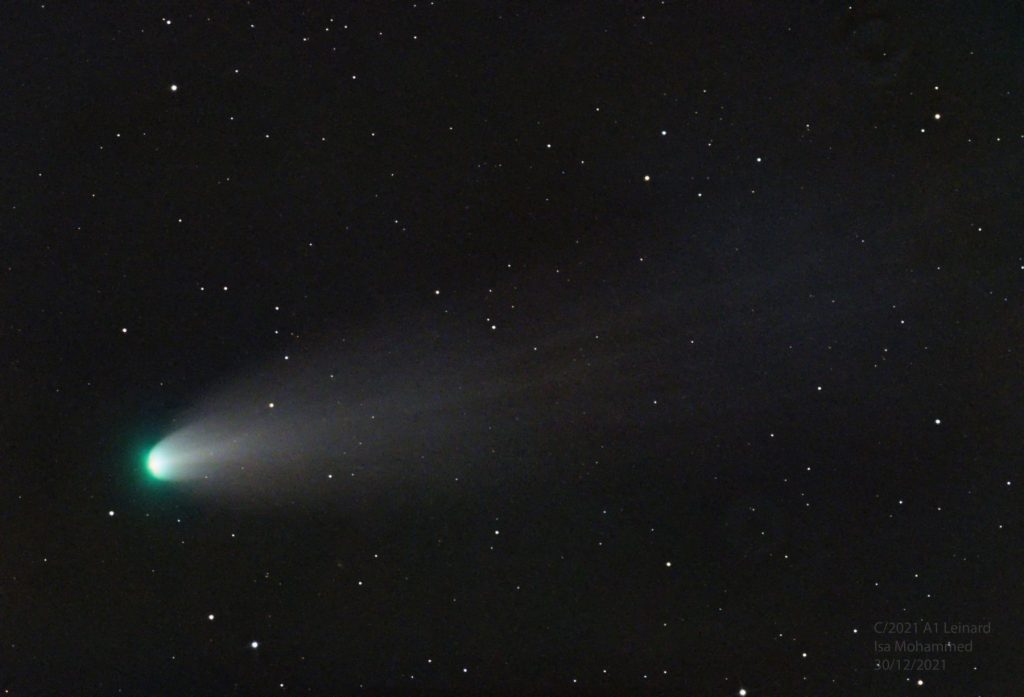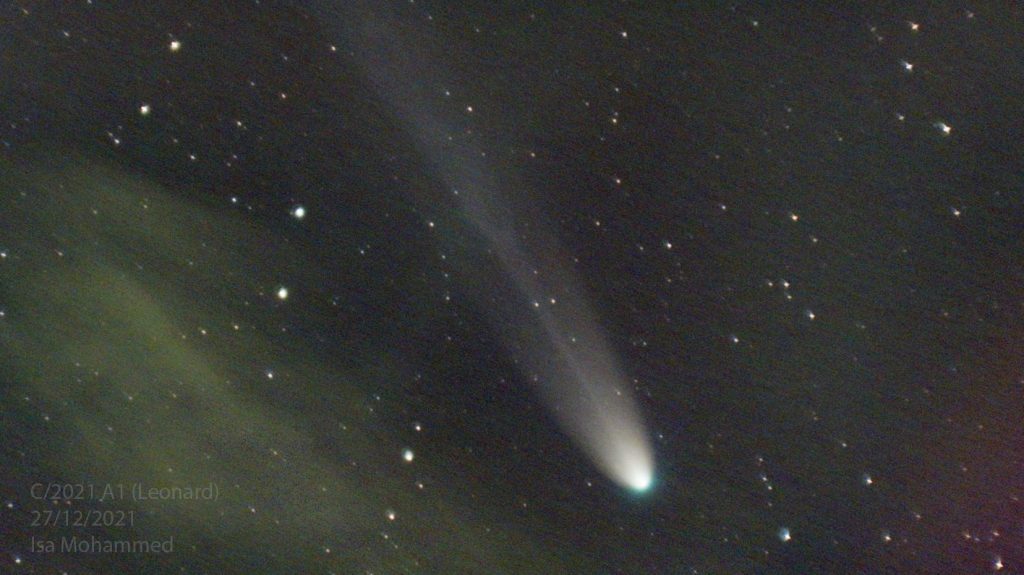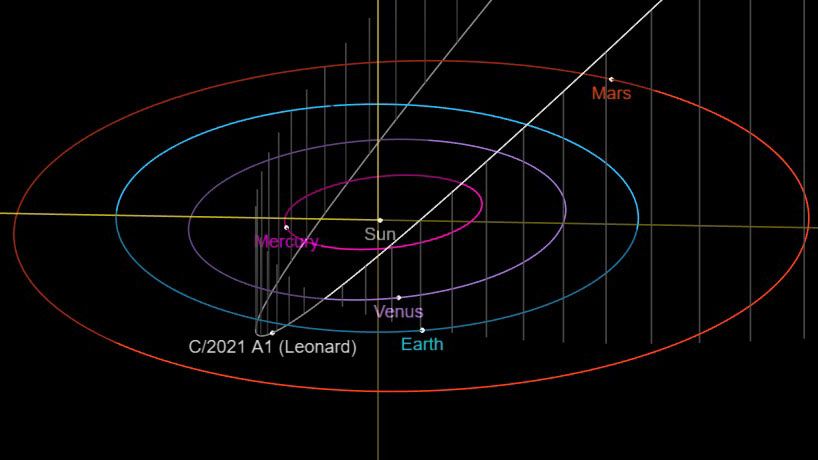Comet Leonard is making its closest approach to the sun tonight, the brightest comet in the night sky right now. Even if it survives the journey, it will be the only time the comet sees our star close up.
Comet Leonard got brighter unexpectedly in late December as it drew closer to the sun, according to EarthSky, and was very visible in T&T’s evening skies. The comet was discovered exactly one year ago today, January 3rd, 2021.

When December began, Comet Leonard’s brightness was hovering at around magnitude +6.3 on the brightness scale used by astronomers. This value is based on an average of dozens of reports worldwide posted on the Comet Observation Database. A magnitude of +6.3 would make Comet Leonard just bright enough to be visible with the unaided eye by sharp-eyed observers under pristinely dark skies. However, those with less-than-perfect viewing conditions could readily sight the comet with the aid of binoculars and a knowledge of where precisely to look using a good star chart.
Over the past couple of weeks, as Comet Leonard approached both the sun and Earth, it has brightened rapidly. The comet passed closest to Earth on Monday at a distance of 21.7 million miles (34.9 million km) and now shines at magnitude +3.9 — a more than nine-fold increase in brightness since the start of the month, placing it readily within range of naked-eye viewers.
Where to look?

The comet may be challenging to identify for several reasons. First and foremost is its current placement in the sky, which puts it against not a dark background by one illuminated by evening twilight. Nonetheless, the comet will have an ally in helping you make a sighting of it, in the form of the brilliant planet Venus.
The dazzling “evening star” is readily visible low in the southwest sky shortly after sunset. And on Friday evening, hovering 5 degrees directly below it will be Comet Leonard.

We suggest you wait until at least an hour after sunset to hunt for Comet Leonard. First, locate Venus, then check out the region of the sky below it and see if you can spy the comet. What you will be looking for is not a sharp pinpoint of light like a star, but a small fuzzy patch of light, perhaps with a semblance of a short tail pointing almost straight up from the patch in the general direction of Venus.
If you cannot visually see the comet with your eyes, scan the region of the sky below Venus with binoculars. You should almost certainly pick it up. A small telescope will accentuate the view of the comet’s gaseous head (called the coma) and its tail.
Comet Leonard will likely begin to fade and will gradually be lost to view after tonight, reaching its closest point to the sun at a distance of 57.2 million miles (92 million km). Once it rounds the sun, it will be thrown out of the solar system into a slightly hyperbolic orbit, never to be seen again.
Leonard’s Last Hurrah

Leonard’s perihelion — or closest approach to the sun in its orbit — coincidentally takes place just hours before Earth’s own perihelion on Tuesday, January 4th, at 12:52 AM AST (0652 GMT). But Leonard’s journey will be a much more of a close approach than that of the Earth’s.
The comet will approach our sun at a distance of roughly 56 million miles (90 million kilometers), which is about half that of Earth’s distance to the sun. Leonard will have to survive the sun’s intense gravitational force at that distance, along with the solar wind. So like many other comets making that close swing by the sun, there’s a risk Leonard may fall apart. But even if the comet survives the journey, NASA said in a statement, “its trajectory will fling it into interstellar space, never to return.”
NASA notes that Leonard made a 40,000-year journey to our sun from the outer solar system, but the comet was only discovered on January 3rd, 2021 – just one year before the perihelion.
“That is strictly coincidental, but I like coincidence,” comet discoverer Gregory Leonard, a senior research specialist at the University of Arizona’s Lunar and Planetary Laboratory, told Space.com in December.
Brighter than most

Overall, Comet Leonard is a far cry from the spectacle that Comet NEOWISE evolved into back in the summer of 2020.
Leonard is much dimmer, and its tail structure is far inferior to NEOWISE. Nonetheless, compared to the vast majority of comets that pass through the inner solar system, Leonard can still be considered quite bright; at any given time, more than half a dozen comets are visible to experienced amateur and professional astronomers, but most of these hardly develop any noticeable tail and are usually accessible only to those with moderately large telescopes. A comet like Leonard, which becomes bright enough to be glimpsed with the naked eye, is far less frequent, perhaps two or three every 10 to 15 years.









